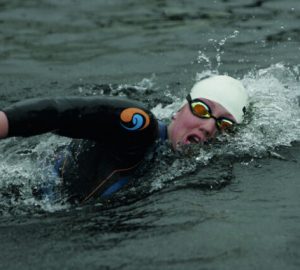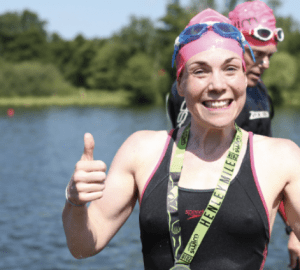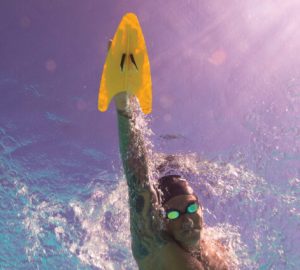Train like a Champion
Keri-anne Payne explains how to make your training more interesting to ultimately make you fitter and faster
When I speak to swimmers about their training I often get asked “How do you make it less boring?”. Firstly, I hardly ever found training boring as each session had a purpose which contributed to my overall end goal. So, no matter if it was a Monday morning or a Wednesday afternoon I knew what I was doing and how it would make me a better swimmer.
The mistake a lot of people make when it comes to training is the type of session they are doing. Just swimming up and down for an hour every session isn’t going to make you a better swimmer and will very quickly become boring! Mixing session focuses during a week or from week to week will keep things interesting and more importantly actually make you a better swimmer. If you want to get faster or fitter you need to train smarter. Here are some of the sessions I used to do and how you can adapt them to make your training more interesting and ultimately make you fitter and faster.
18 x 800s
This gem of a session was delivered to me in the guise of ‘hell week’ – a week dedicated to making or breaking us. There was usually one session in there that was designed to be almost impossible and that was 18 x 800s!
“Are you kidding me?!” was my initial response but I do love a challenge so quickly got my head around it and gave it all I had. The session ended up looking like 6 x 800 descending 1-6 three times. I ended my last 800m with a time of 8.45. So although it was a crazy session, I got a huge amount of confidence from it that no matter how tired I was if I put my mind to it I could do almost anything.
How can you do this?
Straight swimming
I don’t mean swimming in a straight line, although that is always helpful! What I mean by this is that after a big week of training, the best way I recovered was to do as Dory says “Just keep swimming”. We devised a plan working in a four-week cycle: week one on a Friday morning I would swim 8km straight, week two 9km straight, week three 10km straight and – you guessed it – week four would be 11km straight. These sessions had two purposes for me: to help my body recover; and to give me confidence that I could swim over my race distance.
I didn’t need to swim 11km but I knew it would help me physically and mentally in the long run.
How can you do this?
Being able to swim your goal distance in training is always going to be a confidence booster. If your end goal is longer than a 10km then you might want to break that distance up and complete it over a week. Work yourself up in 4 week blocks to swim over your event distance. The aim of this session isn’t just mindless swimming – keep track of your technique.
Heart rate sessions – Cardiovascular booster
Over my 18-year career these types of session changed a fair bit, but the bread and butter was 30 x 100s on 1.45 best average. I used to hold anywhere from just under 60 seconds on a good day to 1.05 on a bad day. As we transitioned from the pool to the open water we needed to start being a bit smarter and train my body for a 10km open water race. My 10km swims used to average around 1.10 per 100m but that would be most of the swim at 1.13ish and then pockets of the swim at around 1.05-1.07 with the last 1000m as close to 1.04 as possible. My training needed to replicate that so my new HR session looked like:
4 x 100m hitting 1.10 on 1.20
4 x 100m hitting 1.05 on 1.15 base
4 x 100m hitting 1.05 on 1.10 base
4 x 100m hitting 1.04 on 1.05 base
A much closer representation of what my races might be like.
How can you do this?
What will your event look like? Will it be a quick start for a few hundred meters then settle into a pace? Try to think about how you can replicate that in your sessions.
For example, if you are taking on a one mile swim you could do 16 x 100s in sets of four:
4 x 100s hitting faster than your goal pace (to replicate the faster start)
4 x 100s hitting goal pace with 10 seconds rest
4 x 100s goal pace with 5 seconds rest
4 x 100s hitting faster than goal pace with as much rest as needed (to replace the faster finish)
Being specific to your actual event will really be the key to helping your training feel more exciting and make you a better, more efficient swimmer.
Keri-anne Payne
is a double open water world champion, triple Olympian and Olympic silver medallist in the 10k open water marathon at the Beijing Olympics in 2008. She created the Straight-Line Swimming methodology with her husband, triple Olympian David Carry.








